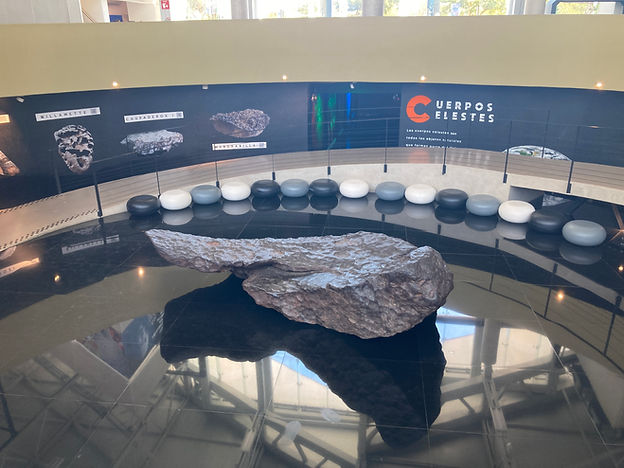On the Trail of the World's Great Meteorites
Culiacán, Mexico

Bacubirito
The Centro de Ciencias de Sinaloa in Culiacán houses Mexico‘s largest meteorite, Bacubirito. At 20+ tons, it is the sixth largest iron meteorite mass in the world. It's length of 4.2 metres makes it the world's longest meteorite. It shows huge regmaglypts, with a suggestion of flight orientation and some rollover lipping.
It was discovered in 1863 in Ranchito, Mexico. Part of the meteorite was sticking out of the ground and was blocking travelers on a pathway. It was excavated in 1902 by 28 men organized by Henry A. Ward. It has been moved several times, first to Constitución Park, then in 1992 to outside the Centro. More recently it has been moved inside the building as a centrepiece exhibit and to protect it from weathering.
Weight - 20+ tons. Size approx 4.2m x 2m x 1.75m.
Composition - 89% iron, 7% nickel, traces of cobalt, sulfur, phosphorous and SiO2.
Photos taken April 11 2024 by Dave and Julie Kenny.
Many thanks to the Directors and the friendly staff of the Centro de Ciencias de Sinaloa (Axel and Gerard) for the information and special tour.

Historic Photos below from Henry A. Ward
(Proceedings of the Rochester Academy of Science (Vol. 4, p. 67, June 24 1902).
- Report republished in Nature Oct 1, 1903

